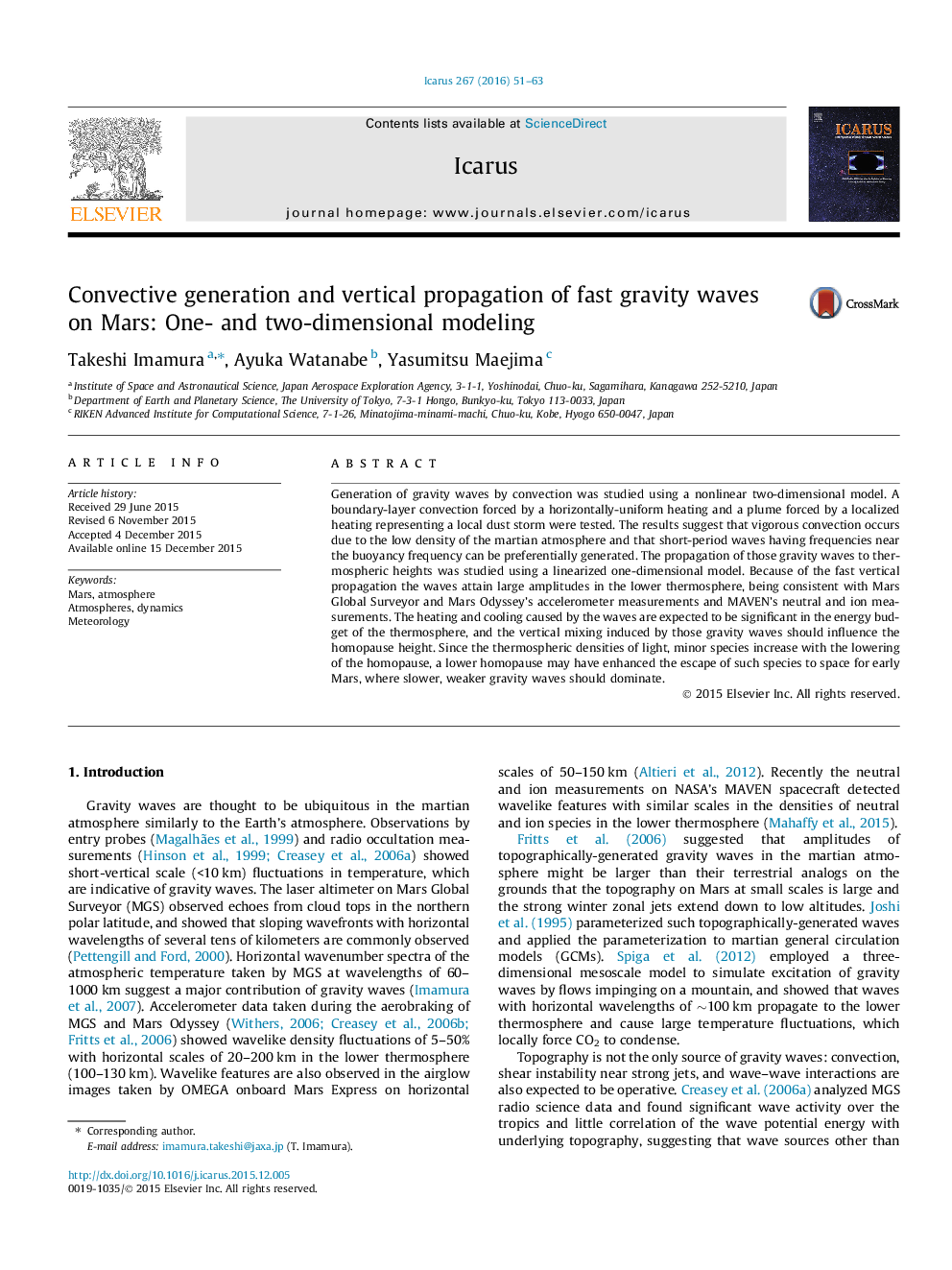| Article ID | Journal | Published Year | Pages | File Type |
|---|---|---|---|---|
| 8135643 | Icarus | 2016 | 13 Pages |
Abstract
Generation of gravity waves by convection was studied using a nonlinear two-dimensional model. A boundary-layer convection forced by a horizontally-uniform heating and a plume forced by a localized heating representing a local dust storm were tested. The results suggest that vigorous convection occurs due to the low density of the martian atmosphere and that short-period waves having frequencies near the buoyancy frequency can be preferentially generated. The propagation of those gravity waves to thermospheric heights was studied using a linearized one-dimensional model. Because of the fast vertical propagation the waves attain large amplitudes in the lower thermosphere, being consistent with Mars Global Surveyor and Mars Odyssey's accelerometer measurements and MAVEN's neutral and ion measurements. The heating and cooling caused by the waves are expected to be significant in the energy budget of the thermosphere, and the vertical mixing induced by those gravity waves should influence the homopause height. Since the thermospheric densities of light, minor species increase with the lowering of the homopause, a lower homopause may have enhanced the escape of such species to space for early Mars, where slower, weaker gravity waves should dominate.
Related Topics
Physical Sciences and Engineering
Earth and Planetary Sciences
Space and Planetary Science
Authors
Takeshi Imamura, Ayuka Watanabe, Yasumitsu Maejima,
